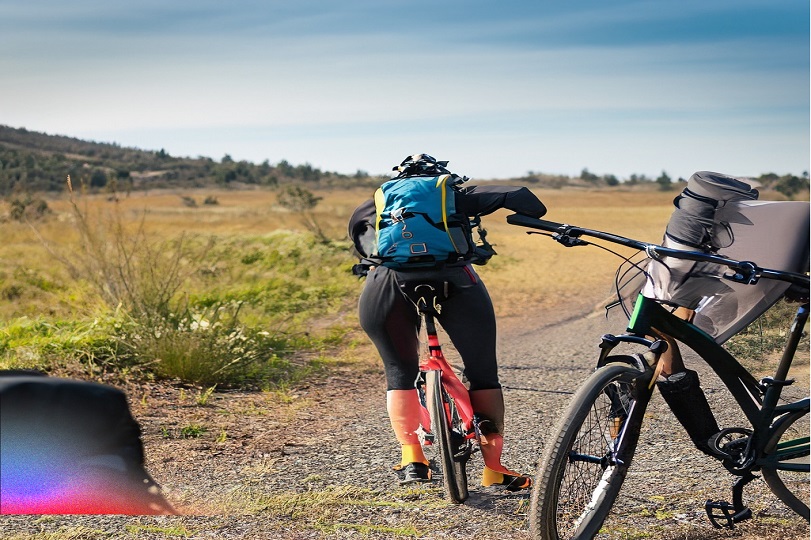Physical Address
304 North Cardinal St.
Dorchester Center, MA 02124
Physical Address
304 North Cardinal St.
Dorchester Center, MA 02124
Your guide to extraordinary adventures around the globe.
Your guide to extraordinary adventures around the globe.

Bikepacking is a fun and adventurous way to explore the outdoors on two wheels. If you’re new to bikepacking, this comprehensive guide will teach you everything you need to know to plan and enjoy your first bikepacking trip.
Bikepacking refers to multi-day cycling trips where you ride on and off-road while camping along the way. It combines aspects of bicycling, backpacking, and bicycle touring. Bikepackers use frame bags, seat packs, handlebar rolls, and other bike-specific soft bags to carry camping gear and supplies on their bikes. The goal is to pack minimal and light so your bike remains agile on both paved and unpaved terrain. Bikepacking routes vary from overnight out-and-backs to weeklong point-to-point journeys in remote wilderness.
Here are some of the appeals of bikepacking:
When planning your maiden bikepacking voyage, it’s smart to start small and easy. Here are factors to consider for your first route:
Length: 2-4 days is ideal for your first trip. This allows you to get a feel for the activity without overcommitting.
Terrain: Stick to paved roads, gravel, dirt roads, and easy singletrack to start. Avoid extremely technical or steep terrain.
Distance: Target 30-60 miles per day. Shorter days early on are fine as you build endurance.
Navigation: Follow routes or trails that are easy to navigate and well marked.
Resupply: Pick places to stop for food/water. Planning where to refuel makes the mileage more manageable.
Campsites: Choose routes with established campsites or look for legal dispersed camping areas. Stealth camping can come later.
Scenery: Part of the fun is taking in new landscapes and vistas so pick routes that showcase nice scenery.
Ask experienced bikepackers for recommendations on starter routes in your region that fit these criteria. Ride with friends your first time out as well.
Packing light yet having the essential gear is critical for enjoyable bikepacking. Here is what to bring on an overnight or two-night trip:
Camping Gear
Bike Repair Tools/Spares
Clothing & Essentials
Food & Water
With an ultralight focus, all this should fit in your bikepacking bags with careful packing. Only bring what you need and make use of things that serve multiple purposes.
Bikepacking requires specialized lightweight bags that attach to specific parts of your bike frame. Here are the main types of bikepacking bags and how to use them:
Frame bag: Attaches inside your bike frame triangle to carry heavier items like food, tools, stove, etc. Keeps weight centered on bike.
Handlebar roll: Straps to your handlebars and holds tent, sleeping bag/pad, or other soft/odd-shaped items. Impacts bike handling minimally.
Seat pack: Sits on back of seat post and carries clothing layers, rain gear, etc. Doesn’t obstruct pedaling.
Accessory bags: Small bags attach to the stem, top tube or down tube to organize tools, toiletries, gadgets, etc. Optional but handy.
Saddle bag/trunk: Offers extra storage under seat for food, camping items, or spares. Try to pack lightly enough to avoid needing this.
Make sure to evenly distribute weight between the left, right, front and back of the bike. Your bike should handle predictably loaded.
It’s wise to train for a few weeks before your maiden bikepacking journey to condition your body for the daily mileage and terrain. Here are some training tips:
If you train properly in the month leading up to your first bikepacking trip, you’ll feel confident in your fitness when departure day arrives.
Here are some additional pointers to make your maiden bikepacking experience a great one:
Ready to Bikepack!
Bikepacking is an amazing way to explore wild spaces. With some preparation, smart packing, route planning, and training, your first bikepacking overnighter will be memorable. You’ll quickly get hooked on the simplicity and thrill of traveling by bike power. Let the adventure begin!